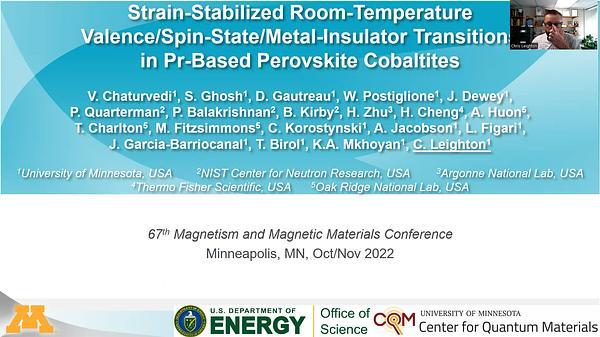Would you like to see your presentation here, made available to a global audience of researchers?
Add your own presentation or have us affordably record your next conference.
Spintronics utilizes the spin orbit coupling (SOC) of a heavy metal layer to generate spin currents by the spin Hall effect (SHE), which can then induce spin orbit torques (SOT) to alter the magnetization of an adjacent ferromagnet. SOT can be both fast and energy-efficient and enable technological applications in spintronic devices such as spin Hall nano-oscillators (SHNOs) 1-3, SOT based magnetic random access memory(SOT-MRAM), and spin logic devices 4,5. However, spin currents generated by SOC also exist in magnetic materials. Recent studies evidenced very large emission of spin currents and strong SOT for magnetization switching in ferrimagnets near compensation 6,7.
In the present study nearly compensated GdFeCo, and Py, are used as spin Hall layer and ferromagnetic layer, respectively. We studied the tunable behaviour of both damping-like(DL) and field-like(FL) SOT efficiencies (θDL and θFL) with respect to a Cu insertion layer in Gd26.7(FeCo)73.3 (10 nm)/Cu(1-5 nm)/Py(3 nm) stack. We performed spin transfer torque ferromagnetic resonance (ST-FMR) measurements on microbars (6 ×12 μm2) to determine the magneto dynamical properties such as current induced DL and FL SOT efficiencies. Figure 1 (a) and (b) show the ST-FMR spectra in the frequency range of 10-15 GHz, and the corresponding linewidth vs. frequency plot of Gd26.7(FeCo)73.3 (10 nm)/Cu(4 nm)/Py (3 nm); (c) and (d) show the Cu thickness dependent SOT efficiencies at f=8 GHz. The DL-SOT efficiency is found to be maximum, θDL~ 20%, at Cu (2 nm) followed by a decreasing trend at higher Cu thicknesses. However, FL-SOT efficiency shows a minimum, θFL~ 10%(-7%), up to Cu (2 nm) followed by ~-53%(48%) at Cu (5 nm) for +ve(-ve) direction of applied magnetic field. The larger value of θFL at higher Cu thickness will be useful for ultrafast current induced magnetization switching as seen in other ferrimagnetic systems.
References
1. H. Mazraati et al., Low operational current spin Hall nanooscillators based on NiFe/W bilayers, Appl. Phys. Lett. 109, 242402 (2016).
2. H. Fulara et al., Spin-orbit torque–driven propagating spin waves, Sci. Adv. 5, eaax8467 (2019).
3. M. Zahedinejad et al., Two-dimensional mutually synchronized spin Hall nano-oscillator arrays for neuromorphic computing. Nat. Nanotechnol. 15, 47–52 (2020).
4. K. Garello et al., Ultrafast magnetization switching by spin-orbit torques, Appl. Phys. Lett. 105, 212402 (2014).
5. M. Cubukcu et al., Spin-orbit torque magnetization switching of a three-terminal perpendicular magnetic tunnel junction, Appl. Phys. Lett. 104, 042406 (2014).
6. D. Céspedes-Berrocal et al., Current-induced spin torques on single GdFeCo magnetic layers, Adv. Mater., 33, 2007047(2021).
7. R. Mishra et al., Anomalous Current-Induced Spin Torques in Ferrimagnets near Compensation, Phys. Rev. Lett. 118, 167201 (2017).

